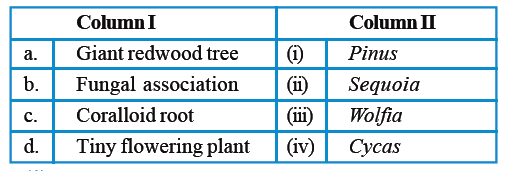Select the correct matching of the type of the joint with the example in human skeletal system
Gliding joint - Between carpals
Cartilaginous joint - Between frontal and parietal
Pivot joint - between third and fourth cervical vertebrae
Hinge joint - between Humerus and pectroal girdle
The correct Answer is:A
To solve the question of matching the type of joint with the example in the human skeletal system, we will analyze each option provided:
1. Gliding Joint between Carpus:
- Gliding joints allow the articulating bones to slide over one another.
- The carpal bones in the wrist are an example of gliding joints, where the bones can move past each other.
- Conclusion: This option is correct.
2. Cartilaginous Joint between Frontal and Parietal:
- Cartilaginous joints are slightly movable and typically have a pad of fibrocartilage between the adjoining bones.
- The frontal and parietal bones are actually joined by sutures, which are fibrous joints, not cartilaginous.
- Conclusion: This option is incorrect.
3. Pivot Joint between Third and Fourth Cervical Vertebrae:
- Pivot joints allow for rotational movement, where one bone rotates around another.
- The pivot joint is found between the atlas and axis (first and second cervical vertebrae), not between the third and fourth cervical vertebrae.
- Conclusion: This option is incorrect.
4. Hinge Joint between Humerus and Pectoral Girdle:
- Hinge joints allow for movement in one plane, similar to the motion of a door.
- The humerus forms a hinge joint with the ulna at the elbow, not with the pectoral girdle.
- Conclusion: This option is incorrect.
Based on the analysis above, the only correct matching of the type of joint with its example in the human skeletal system is:
Final Answer: Option A - Gliding joint between carpus.
---
- Gliding joints allow the articulating bones to slide over one another.
- The carpal bones in the wrist are an example of gliding joints, where the bones can move past each other.
- Conclusion: This option is correct.
- Cartilaginous joints are slightly movable and typically have a pad of fibrocartilage between the adjoining bones.
- The frontal and parietal bones are actually joined by sutures, which are fibrous joints, not cartilaginous.
- Conclusion: This option is incorrect.
- Pivot joints allow for rotational movement, where one bone rotates around another.
- The pivot joint is found between the atlas and axis (first and second cervical vertebrae), not between the third and fourth cervical vertebrae.
- Conclusion: This option is incorrect.
- Hinge joints allow for movement in one plane, similar to the motion of a door.
- The humerus forms a hinge joint with the ulna at the elbow, not with the pectoral girdle.
- Conclusion: This option is incorrect.
Topper's Solved these Questions
- KINGDOM FUNGI (KINGDOM MYCOTA)BOOK - TRUEMEN BIOLOGY ENGLISHCHAPTER - KINGDOM FUNGI (KINGDOM MYCOTA)EXERCISE - MULTIPLE CHOICE QUESTIONS
147 Videos
- MORPHOLOGY OF FLOWERING PLANTS (ANGIOSPERMS)BOOK - TRUEMEN BIOLOGY ENGLISHCHAPTER - MORPHOLOGY OF FLOWERING PLANTS (ANGIOSPERMS)EXERCISE - Multiple Choice Questions
329 Videos
Similar Questions
Select a correct match:
View SolutionSelect out the correct match
View SolutionSelect a correct match
View SolutionSelect a correct match
View SolutionSelect correct matching :-
View SolutionSelect correct match :

View SolutionSelect correct match:

View SolutionSelect the correct matched pair
View SolutionSelect the correct matched pair
View SolutionSelect correct match

View Solution